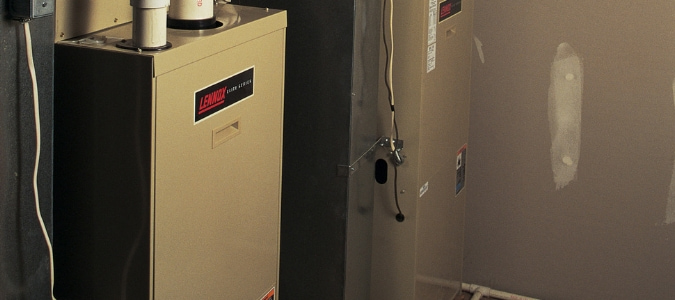A furnace is one of the most important elements of any home, providing heat and comfort throughout the colder months. Unfortunately, it’s also one of the appliances in a home that homeowners don’t understand all that well.
Understanding at least the operational basics helps you understand how your heating system, and even your larger HVAC system, works. This gives you an educated head start if and when a heating situation arises.
Understanding your heating system can also help you evaluate the need for professional HVAC assistance.
How A Furnace Works
There are many different components of a heating system that work together to heat your home. Here are the steps involved in how a furnace heats your home.
- Air is collected from the return register and passes through an air filter to remove particles.
- The furnace starts when the thermostat signals that the home has dropped below the desired temperature.
- The ignition starts the burner and flames from the burner heat a metal heat exchanger to warm the air.
- The blower motor and fan moves heat out through the ductwork throughout the home.
As you can see, there are many different components involved in your heating system. If any one of these components fails to work, it could lead to your heater malfunctioning.
My Furnace Won’t Turn On
Are Your Filters Dirty?
Because our air filters are out of sight, it’s easy to forget about them. Ideally, air filters should be changed once every three months. However, there are many factors that can affect how frequently you need to change your filters. Some reasons why you may need to change your filter more often include:
- Multiple people are living in your home
- You have a larger home
- You’re using a lower-quality air filter
- You own pets
There are other personal reasons why you may want to change your filter more frequently, including if you have young kids in your home or if someone in your home has respiratory problems.
Is the Furnace Switch or Gas Valve Off?
Has the Circuit Breaker Tripped?
Has the Thermostat Gone Bad?
- The high limit switch is set to off
- You notice damaged or loose thermostat wires
- The thermostat’s settings are incorrect
- A triggered flame sensor
- The safety float switch or triggered pressure switch has flipped
- A cracked heat exchanger
- There’s a blockage in the heating ducts or pipes
- An unhinged or ajar furnace panel door
My Furnace is Making Grinding Noises: What Do I Do?
If your furnace is making squealing, booming or grinding noises, it’s not just annoying, but could likely be the sign of an ongoing problem. Do not ignore this obvious warning sign. Get professional help before the damage gets worse.
At the first unusual noise, especially grinding or scraping, turn your furnace off. These noises can indicate several serious issues:
- The blower wheel has come loose from the motor shaft and is scraping against the casing.
- The blower wheel has broken and needs replacement.
- You have a damaged motor mount, and the entire blower assembly has slipped out of place and is rubbing against the housing.
- The blower’s motor bearings need replacing.
In gas-powered furnaces, noises like a “booming” sound could be due to a delayed fuel ignition in the burner assembly. This is typically caused by a buildup of moisture due to inactivity. The moisture leads to corrosion within the unit which can prevent the gas from getting to the burners.
Another possible cause of unusual noises, especially a squealing noise, in your furnace is that the blower belt is loose and slipping. Just like your car’s fan belt, the blower belt will make itself known, and loudly, as it ages and begins to fray and slip.
These are some of the most common sounds that furnace owners should be aware of. The truth is, if your furnace is making any unfamiliar sounds, it’s important to call a professional and schedule an inspection.
Your furnace is one of the most critical and expensive systems in your house. That investment needs monitoring and service regularly. Not only to ensure its in proper working order but also to avoid potential equipment failures and expensive repairs or replacements.
The last thing you want when coming in to escape the cold outside is to find that it’s just as cold inside. The fact is that furnace maintenance and repair can often be challenging and laborious. It often requires special tools and advanced training to make repairs safely and successfully. Mistakes can be expensive and even potentially dangerous.
In most cases, the best value will be contacting and hiring an HVAC professional with the tools, training and experience to get the job done right the first time. Give yourself and your family the peace of mind of knowing that you’ll always have a safe and reliable place to come in out of the cold!
ABC Can Solve Your Heating And Cooling Woes
Furnaces are complex systems, and trying to work on them without special training and tools can create larger problems and can even lead to damage to your home. Instead of taking these risks, contact the professionals at ABC Home & Commercial Services. Our licensed specialists are available all day and all night to handle any HVAC repairs or issue you may be having.



